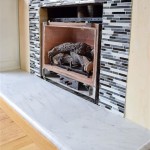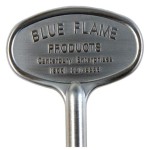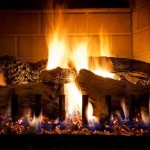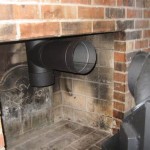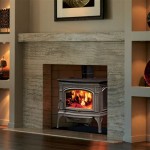Gas Fireplace Vent Insulation: Enhancing Efficiency and Safety
Gas fireplaces provide warmth, ambiance, and a cozy atmosphere to homes. However, their efficiency and safety can be significantly impacted by heat loss through the vent system. Gas fireplace vent insulation plays a crucial role in addressing this issue by minimizing heat loss and optimizing the performance of the fireplace.
Vent insulation acts as a barrier between the hot exhaust gases and the surrounding environment. It reduces the amount of heat that dissipates into the attic, crawl space, or other areas, preventing energy waste. By minimizing heat loss, vent insulation enhances the efficiency of the fireplace by allowing more heat to be transferred into the living space. This translates into lower fuel consumption and reduced energy costs.
Benefits of Gas Fireplace Vent Insulation
Insulating the vent system offers several benefits for homeowners. The most notable benefit is increased efficiency, resulting in lower energy bills and reduced carbon footprint. Additionally, insulation helps prevent condensation buildup in the vent system, which can lead to corrosion and potential safety hazards. By maintaining a warmer vent temperature, insulation minimizes condensation and reduces the risk of damage to the fireplace and the surrounding area. Moreover, properly insulated vents contribute to improved safety, as they prevent excessive heat from transferring to nearby combustible materials.
Types of Insulation for Gas Fireplace Vents
There are various types of insulation materials available for gas fireplace vents, each with its unique characteristics and advantages. Commonly used materials include:
1. Fiberglass Insulation
Fiberglass insulation is a popular and cost-effective option. It is available in batts or rolls and can be easily installed by fitting it inside the vent pipe. Fiberglass is lightweight, fire-resistant, and provides good thermal insulation.
2. Mineral Wool Insulation
Mineral wool insulation is another widely used option known for its excellent thermal performance. It is made from rock or slag wool and is available in various forms, including blankets, batts, and loose fill. Mineral wool is fire-resistant, non-combustible, and highly effective in preventing heat loss.
3. Ceramic Fiber Insulation
Ceramic fiber insulation offers superior heat resistance and is ideal for high-temperature applications. It is made from ceramic fibers and is available in blankets, boards, and loose fill. Ceramic fiber insulation is typically used in industrial settings but can also be suitable for gas fireplace vents, particularly in areas where heat loss is a significant concern.
Installation Considerations
The installation of gas fireplace vent insulation should be performed by a qualified professional to ensure proper installation and meet safety standards. It is crucial to select insulation materials that are compatible with the vent system and the surrounding environment. Factors to consider during installation include the type of vent material, the size and shape of the vent, and the temperature range of the vent system.
Inspecting the existing vent system for leaks or damage before installing insulation is essential. Any cracks, holes, or loose connections should be repaired or sealed before applying insulation. It is also important to ensure that the insulation does not restrict airflow or create a fire hazard. Properly installed insulation should allow for adequate airflow and prevent the accumulation of heat within the vent system.
Maintenance and Inspection
Regular maintenance and inspection are crucial for maintaining the optimal performance and safety of the fireplace vent insulation. It's recommended to inspect the insulation annually for any signs of damage, deterioration, or blockage. If any issues are identified, they should be addressed promptly to prevent potential problems. The vent system should also be inspected for proper airflow and any signs of condensation buildup. A professional inspection can ensure the continued efficiency and safety of the fireplace vent insulation.
Investing in gas fireplace vent insulation is a worthwhile investment that offers significant benefits in terms of efficiency, safety, and long-term performance. By minimizing heat loss, reducing condensation, and enhancing safety, insulation ensures the optimal operation of the fireplace, providing warmth, comfort, and peace of mind.

Icc Direct Vent Gas Venting Insulated Wall Thimble
Insulating Around Direct Vent Fireplace Hearth Com Forums Home
Gas Fireplace Venting Explained Heat Glo

Insulating A Direct Vent Gas Fireplace Fine Homebuilding
Gas Fireplace Exterior Wall Insulation Vent Cover Hearth Com Forums Home

Insulation Touching Chimney Meta Flex Flue Pipe Internachi Forum
Insulating Around Fireplace Flue Diy Home Improvement Forum

Icc Direct Vent Gas Venting Insulated Wall Thimble

Termination Cap Cover For Direct Vent Fireplace Draft Stopper

Fixing A Draft Fireplace Doghouse Kickout Diy Home Improvement Forum
Related Posts



